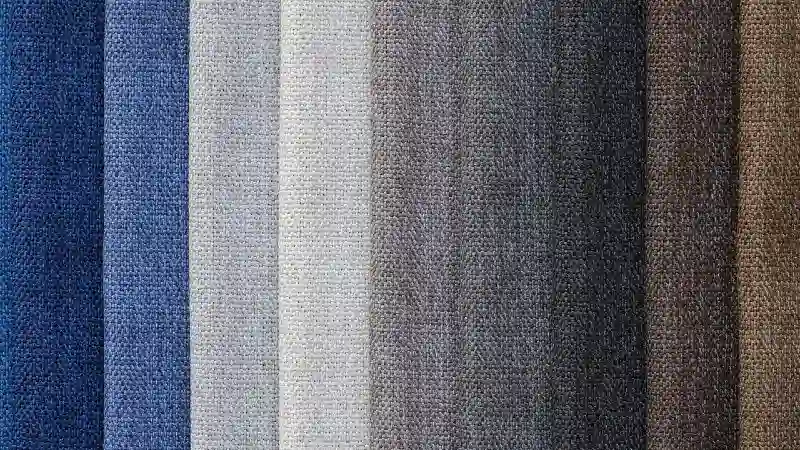
Disclosure: This post may contain affiliate links, meaning we get a commission if you decide to make a purchase through our links, at no cost to you. Please read our disclosure for more info.
Last Updated on May 12, 2024 by Work In My Pajamas
In an era where environmental responsibility has become a pivotal concern, the fashion industry is a significant player due to its large ecological footprint. From water pollution to waste generation, the impact of traditional fabrics on our ecosystem is profound.
Key Takeaways:
- Eco-friendly fabrics contribute significantly to environmental conservation by reducing pollution and preserving valuable resources.
- Choosing sustainable textiles can be economically beneficial, leading to cost savings for consumers and creating new market opportunities for producers.
- Wearing eco-friendly fabrics supports healthier living by reducing exposure to toxic chemicals.
- Consumer demand for sustainable products drives the industry towards innovative practices and developing new, eco-conscious materials.
The Environmental Impact of Traditional Fabrics
A significant environmental impact marks the conventional textile industry, heavily reliant on water, energy, and chemicals. Producing textile fibers like conventional cotton demands extensive use of freshwater and pesticides, contributing to water scarcity and ecosystem toxicity. While less water-intensive, synthetic materials pose challenges such as microfiber pollution and are derived from non-renewable petroleum resources. The waste generated at various stages of textile production exacerbates the load on our increasingly burdened landfills. It contributes to the growing problem of environmental degradation.
Benefits of Eco-Friendly Fabrics
Amidst growing environmental awareness, eco-fabrics present an opportunity to mitigate some of the fashion industry’s environmental damage. Such fabrics, produced with minimal chemical usage and often from recycled or organic sources, offer a greener alternative to conventional textiles. Sustainable production methods conserve natural resources and curtail carbon emissions, aligning with global efforts to combat climate change. By choosing eco-friendly fabrics, consumers are vital in steering the industry toward greener practices and promoting a healthier planet for future generations.
The Economic Impact of Sustainable Textiles
Eco-friendly textiles are not merely a boon for the environment; they also make sound economic sense. Companies that invest in sustainable practices may benefit from long-term cost savings, government incentives, and a strengthened brand reputation among consumers. For consumers, durable and high-quality sustainable garments can mean a wardrobe that withstands time, reducing the frequency of purchases and the tendency towards disposable fashion, ultimately translating to financial savings and a lighter ecological footprint. An economic model that supports sustainability in the textile industry is essential for promoting long-term profitability while concurrently addressing environmental concerns.
Health Impact of Choosing Environmentally Friendly Fabrics
Beyond their eco-friendly profile, sustainable textiles pose fewer health risks than their conventional counterparts. Exposure to the chemicals in synthetic fabrics, such as formaldehyde and phthalates, has been linked to skin irritation and long-term health issues. On the other hand, eco-friendly fabrics often derive from natural fibers. They are processed without toxic chemicals, making them safer for consumers, particularly those with sensitive skin or allergies. The comfort of wearing natural, breathable fabrics cannot be understated; these benefits contribute to an overall improved quality of life and well-being.
Innovations and Advancements in Eco-Fabrics
The sustainable textile sector is ripe with innovation, leading to the creation of environmentally friendly and technologically advanced fabrics. Breakthroughs have introduced a variety of new materials, such as biodegradable polyesters and regenerated cellulosic fibers, that meet the needs of environmentally conscious consumers without compromising on performance or aesthetic appeal. These materials are created using methods drastically reducing environmental impact, such as recycling water and utilizing renewable energy sources. Eco-fabric usage is elevated by continuous improvement in production technologies, resulting in materials that meet stringent environmental standards and offer enhanced functionality and design.
Consumer Influence and Market Trends
Market trends in fashion are increasingly influenced by consumer choices and their growing penchant for sustainability. As environmentally conscious consumers seek out eco-friendly products, they are reshaping the market, pushing brands to be more transparent and accountable for their production processes. This consumer-driven change has prompted more brands to divert their focus towards sustainability, resulting in the proliferation of textiles that are less harmful to the environment. The fashion industry’s responsiveness to consumer preferences underscores individuals’ power to effect tangible change through the power of their wallets and the importance of purchasing decisions.
Identifying True Eco-Friendly Fabrics
The upswing in sustainable fashion has made it increasingly vital to distinguish truly eco-friendly fabrics from those not. Labels and certifications serve as a guide for consumers, signaling adherence to specific environmental standards. Recognized certifications such as the Global Organic Textile Standard (GOTS) signify fabrics produced under rigorous ecological and social criteria. However, savvy consumers should also research these labels’ criteria and consider the brand’s overall environmental strategy.
Making a Difference, One Fabric at a Time
Whenever you choose an environmentally friendly fabric, you vote with your dollar for a greener future. You are supporting a shift towards more sustainable practices in the fashion industry and telling brands that sustainability matters. Small changes in your shopping habits can contribute to a larger movement towards a more sustainable world.
The Future of Sustainable Fashion
Looking forward, the trajectory for sustainable fashion is promising. Increased consumer awareness and ongoing technological innovation will likely escalate the shift towards eco-friendly textiles. As the industry evolves, we can anticipate witnessing green materials’ expansion and polluting practices decline. The fashion industry’s journey towards sustainability is far from over. Still, each step towards embracing eco-fabrics is a stride in the right direction—towards creating a tapestry of a healthier planet and a more ethically driven fashion landscape.
Conclusion
Embracing environmentally friendly fabrics is a powerful way to impact the environment and support brands committed to sustainability positively. By choosing eco-friendly fabrics, you invest in high-quality clothing and contribute to a greener future for future generations.
Discover more from reviewer4you.com
Subscribe to get the latest posts to your email.


